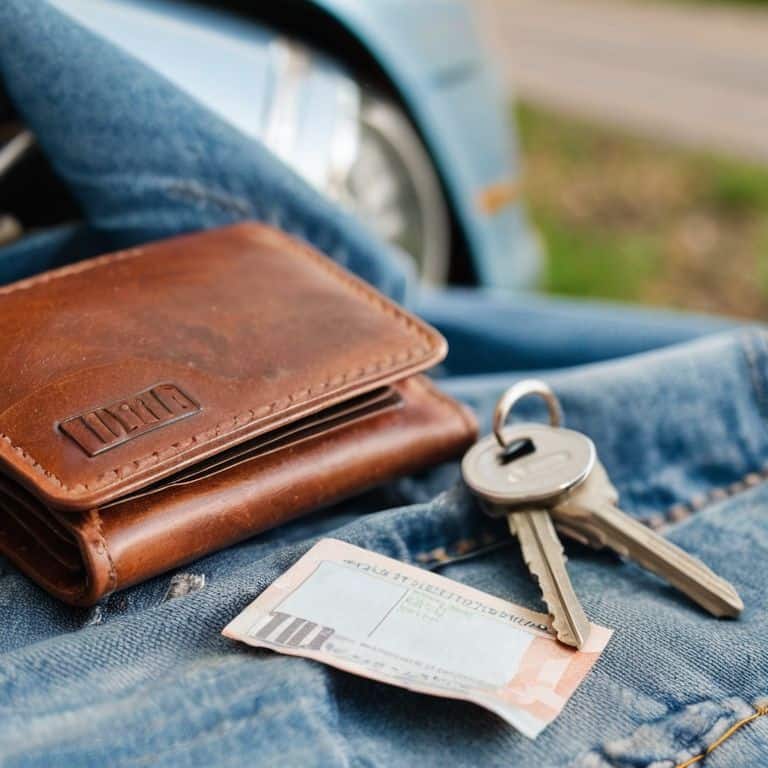I still remember the sleepless nights I spent worrying about what counts as a real emergency for your fund. I had just graduated from college, and the weight of my student loans and credit card debt was crushing me. Every unexpected expense felt like a disaster, and I didn’t know how to prioritize. But as I look back, I realize that I was stuck in a cycle of financial anxiety, and I didn’t know how to break free. The question that haunted me was: what actually constitutes a real emergency when it comes to my money?
As someone who’s been in the trenches, I want to offer you a no-nonsense guide to understanding what counts as a real emergency for your fund. I’ll share my personal story, including the mistakes I made and the lessons I learned. My goal is to provide you with honest and actionable advice that will help you build a safety net and achieve financial peace of mind. I’ll cut through the hype and give you a clear roadmap to follow, so you can stop worrying about money and start building the life you want.
Table of Contents
Emergency Fund Essentials

When it comes to financial crisis management, having a solid emergency fund in place is crucial. This fund serves as a _financial safety net_ that helps you navigate unexpected expenses without going into debt. I’ve learned from my own experience that allocating a portion of my income towards emergency fund essentials has been a game-changer. By prioritizing this, I’ve been able to avoid financial stress when unexpected expenses arise.
To effectively manage your emergency fund, it’s essential to practice unexpected expense planning. This involves identifying potential risks and setting aside funds to mitigate them. For instance, if you own a car, you should factor in the cost of unexpected repairs or maintenance. By doing so, you’ll be better equipped to handle financial shocks and avoid dipping into your long-term savings.
By incorporating budgeting for rainy days into your financial routine, you’ll be well on your way to building a robust emergency fund. Remember, it’s all about finding a balance between saving for the future and being prepared for the unexpected. By making small adjustments to your daily habits and prioritizing emergency fund allocation, you’ll be able to _weather any financial storm_ that comes your way.
Budgeting for Rainy Days
When it comes to budgeting for emergencies, it’s essential to strike a balance between saving and spending. You don’t want to be so focused on building your safety net that you neglect your daily expenses.
To make the most of your emergency fund, consider prioritizing needs over wants. This means being honest about what you can cut back on and allocating that money towards your rainy-day fund.
Prioritizing Emergency Expenses
When it comes to prioritizing emergency expenses, it’s essential to identify what truly urgent costs need to be covered. This could include medical bills, car repairs, or essential home maintenance. By focusing on these critical expenses, you can ensure that you’re using your emergency fund for its intended purpose.
To make the most of your emergency fund, consider categorizing your expenses into needs versus wants. This will help you allocate your resources effectively and make smart financial decisions when unexpected expenses arise.
What Counts as Real Emergency

When it comes to financial crisis management, it’s essential to understand what constitutes a genuine emergency. For me, it was when my car broke down, and I had to choose between paying for repairs or risking my job by not having a reliable means of transportation. This experience taught me the importance of having an emergency fund allocation in place. I learned to prioritize unexpected expense planning by setting aside a small portion of my income each month.
As I reflect on my journey, I realize that budgeting for rainy days is not just about saving money; it’s about being prepared for life’s uncertainties. By prioritizing emergency expenses, I’ve been able to avoid going into debt when unexpected costs arise. My rule of thumb is to ask myself if the expense is essential and if it can be delayed. This simple question has helped me make more informed decisions about my finances.
In my experience, having a financial safety net in place has been a game-changer. It’s allowed me to take calculated risks and make progress toward my long-term financial goals. By focusing on prioritizing emergency expenses, I’ve been able to build a cushion that protects me from life’s surprises. This, in turn, has given me the confidence to invest in myself and my future, knowing that I have a solid foundation to fall back on.
Allocating for Unexpected Expenses
When it comes to allocating for unexpected expenses, I’ve learned that setting aside a buffer is crucial. This means dedicating a small portion of your income to a separate fund, solely for unexpected costs. It’s not about predicting what will go wrong, but being prepared for when it does.
I’ve found that automating transfers to this fund helps me stay on track. By treating it as a non-negotiable expense, I ensure that I’m always building a safety net, no matter what life throws my way.
Financial Crisis Management Tips
When it comes to managing a financial crisis, staying calm is crucial. This allows you to think clearly and make rational decisions about your finances. I’ve been in tough spots before, and I can attest that panic only leads to poor choices. By keeping a level head, you can assess your situation and take the necessary steps to get back on track.
To effectively manage a financial crisis, it’s essential to prioritize needs over wants. This means making tough decisions about where to allocate your limited resources. I’ve found that automating my savings and expenses helps me stay on top of my finances, even in chaotic times. By doing so, you can ensure that you’re addressing the most critical aspects of your financial situation and making progress towards recovery.
5 Real Emergency Alerts for Your Fund
- Medical emergencies that require immediate attention and have significant out-of-pocket costs
- Major car repairs or replacements that are essential for daily commuting or work
- Unexpected home repairs, such as a broken furnace or leaking roof, that pose a health or safety risk
- Loss of income due to job loss, illness, or injury that impacts your ability to pay essential bills
- Natural disasters or other catastrophic events that damage your home or disrupt your income streams
Key Takeaways for Building a Solid Emergency Fund
Identify and prioritize essential expenses to ensure you’re prepared for real financial emergencies, not just unplanned splurges
Allocate a portion of your budget for unexpected costs, and regularly review your emergency fund to ensure it’s adequately funded and aligned with your changing needs
By understanding what constitutes a genuine financial emergency and implementing simple, sustainable habits like weekly ‘money dates’, you can break the cycle of debt and start building a safety net that brings peace of mind and financial freedom
Defining the Line
A real emergency isn’t when you want something, it’s when you need something – and that distinction is what separates financial freedom from financial stress.
Alex Barnes
Taking Control of Your Financial Emergencies

As we’ve discussed, understanding what counts as a real emergency for your fund is crucial for maintaining financial stability. We’ve covered the emergency fund essentials, including budgeting for rainy days and prioritizing emergency expenses. We’ve also explored what constitutes a real emergency, from financial crisis management tips to allocating for unexpected expenses. By grasping these concepts, you’ll be better equipped to navigate life’s unexpected twists and turns, and make informed decisions about when to dip into your safety net.
So, as you move forward, remember that financial freedom is within reach. It’s about building simple, sustainable habits and being proactive about your money. By committing to regular ‘money dates’ and staying informed, you’ll be well on your way to creating a brighter financial future. Keep in mind, it’s okay to make mistakes – it’s all part of the journey. The key is to learn from them and keep moving forward, always striving for a more secure and stable financial tomorrow.
Frequently Asked Questions
How do I determine if a car repair is a real emergency or just a maintenance expense?
For me, a car repair is a real emergency if it’s impacting my ability to get to work or compromising my safety on the road. If it’s just a routine maintenance issue, I try to budget for it in advance. Ask yourself: can I still get by without fixing it immediately, or will it cause a bigger problem down the line?
What if I have a medical emergency, but I also have insurance – do I still need to use my emergency fund?
If you have a medical emergency and insurance, you’ll still likely face some out-of-pocket costs. In this case, it’s okay to dip into your emergency fund to cover those expenses, like copays or deductibles. Think of it as a bridge to help you get back on your feet while you’re recovering.
Can I consider losing my job as a legitimate reason to dip into my emergency fund, or are there other steps I should take first?
Losing your job can be a legitimate reason to tap into your emergency fund, but not before exploring other options like filing for unemployment, reaching out to your network, or picking up a side hustle to bridge the gap.














